Role of Veterinary Science in Safety of Environment
1Dr. Ankit Jain, 2Dr. Supriya Shukla, 3Dr. Joycee Jogi, 4Dr. Rakhi Gangil, 2Dr. Daljeet Chhabra, 4Dr. Rakesh Sharda, 4Dr. Ravi Sikrodia, 5Dr. Vishal Prajapati, 5Dr. Prashant Prajapati,
1Ph.D. Scholar, 2Professor, 3Associate Professor, 4Assistant Professor, 5,6M.V.Sc Scholar,
College of Veterinary Science and AH, Mhow (M.P.)
*E-mail – ankitjain271@gmail.com
- Introduction
Livestock play important roles in farming system in developing countries by providing food and income. India holds the largest livestock population in the world, and among agriculture, livestock is the major subsector that has a great significance to the Indian economy and particularly for the welfare of the rural farmers in India. In India among the livestock population, small ruminants play an important role in the rural economy since most of the farmers are mainly poor and marginal farmers, they cannot afford the huge maintenance expenses on large ruminants compared to the small ruminants. Within small ruminants, goat rearing is considered one of the backbone of the Indian farming industry as it provides gainful employment to the farmers especially in the rural area. The livestock sector contributes significantly to global warming through greenhouse gas (GHG) emissions.
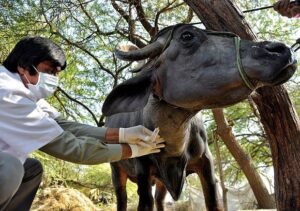
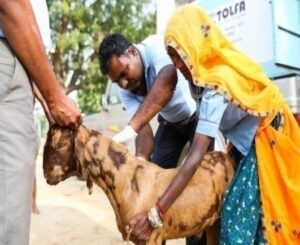
Figure 1: Role of Veterinarian in relief of animal suffering
In India, the emission rate per animal is much lower than the developed countries, due to huge livestock population, the total annual CH4 emission is about 9- 10 Tg from enteric fermentation and animal wastes. India possesses the largest livestock population in the world and accounts for the largest number of cattle (world share 16.1%), buffaloes (57.9 %), second largest number of goats (16.7 %) and third highest number of sheep (5.7 %) in the world. Out of various livestock enterprises, dairying is most popular in the country and dairy animals, which comprise of the majority of the livestock, account for nearly 60% of these enteric emissions. The GHG emissions from the agriculture sector in India are mainly in the form of CH4 primarily due to enteric fermentation and rice paddy cultivation. N2O is also emitted from this sector and is mainly from the agricultural fields due to application of fertilizers (Sejian et al., 2021)
The classical view of a veterinarian as a person qualified to practice veterinary medicine has lead most people to think that their clinical practices are related to the prevention, cure or alleviation of pain and treatment of injuries in animals, especially domestic animals. Though due to climate change these roles are very important, the contemporary roles undertaken by veterinarians go far beyond these more visible tasks, and this is the reason why there is a need for far greater awareness in the public eye. It must be recognized that as the world becomes intricately inter-connected and more complex, so are the various obligations and responsibilities that veterinary professionals must undertake. Over the years veterinary professionals have played significant and contributory roles in animal and human health and welfare, biomedical research, food quality, food safety, food security, ecology, ethology, epidemiology, microbiology, parasitology, pathology, physiology, psychology, radiology, research and development of pharmaceuticals, remedies, vaccines, and toxicology; also as educators, trainers, and policymakers, and also interlinked with wildlife conservation efforts and the protection of the environment and biodiversity in one health direction.
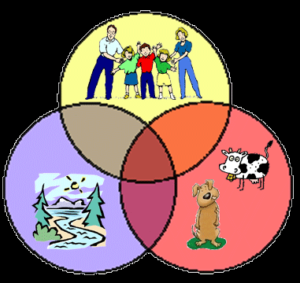
Figure 2: Role of Veterinary science in One Health concept
As challenges have risen, veterinarians have found ways to adapt given that their knowledge and training makes them multifunctional professionals. This aids societies so that its animals stay healthy and productive. It is not surprising that becoming a veterinarian is a highly popular career choice. Recognition that healthy and productive livestock make important contributions to food production, income generation, job creation, economic growth, and poverty alleviation is often overlooked or taken for granted. Yet, on average, livestock contribute some 40 percent of agricultural GDP. As the world population grows and middleclass incomes rise, demand for livestock products increases a consumption boom shaped by two decade of rapid economic growth and globalization. But there are certain high impact diseases that do not allow animal husbandry to flourish. Less dramatic diseases also impact the performance of farm animals, leading to lower production efficiencies and associated financial losses due to mortality and morbidity. Also, poor animal health in turn negatively influences animal welfare. In fact, studies have demonstrated that there is a direct correlation between the quality of livestock production and the provision of veterinary services. Given that food animals support the livelihoods and nourishment of almost a billion people, efforts should be directed at upholding food security.
- Role of Veterinary Public health in protection of environment
Veterinarians are valuable “one health” practitioners because they are highly trained medical professionals with a unique ability to respond to the unknown. Veterinary public health contributes to public health. Veterinarians working in fields are skilled diagnosticians for acute and chronic diseases of animals that may affect the owners and their families and the surrounding communities. Specific examples of public health activities include performing routine health examinations, maintaining vaccination regimens, implementing parasite control programs, advising on the risks of animal contact for immunocompromised individuals, facilitating the use of guide and service dogs for people with disabilities, and promoting the benefits of the human-animal bond. Communities are best served when veterinarians approach collective health issues with a population health perspective, applying relevant epidemiological principles at the community or population levels. In addition to these direct services, veterinary practitioners report disease events and trends to state public health and regulatory agencies, collaborate with human medical counterparts on zoonotic disease prevention and control, and advise local health boards and commissions. These relationships would not exist if not for the inextricable link between animal and human health.
Many factors contribute to the increasing vulnerability of production animals to infectious disease. These include increasing intensity and concentration of production agriculture, genetic convergence of many food-producing species, accessibility of production animals to external contact (despite rigorous biosecurity measures), scale and frequency of animal transport (domestic and international), increasing size of feedlots, lack of immunity to foreign animal diseases, the relatively porous nature of national borders, and the marked shortage of trained foreign animal disease diagnosticians and epidemiologists. Many important zoonotic diseases transmitted by food-producing animals (eg, brucellosis and tuberculosis) have been eradicated or controlled in North America and Europe by pasteurization of dairy products, herd testing and culling, and inspections at slaughter. Other diseases transmitted to humans from food-producing animals (eg, campylobacteriosis, listeriosis, salmonellosis, staphylococcosis, and Shiga toxin–producing E. coli) cause a sizable fraction of the national and international burden of foodborne morbidity and death (Noah, 2022).
Meat production has tripled in the last 50 years. India has become the world’s largest exporter of bovine meat. The meat production and consumption have greater impact on sustainability – economy, society and environment. When an animal is slaughtered, only one-third it is harvested as meat and the rest comprise byproducts and waste. The byproducts (including organs, fat, skin, feet, abdominal and intestinal contents, bone and blood) of cattle, pigs and sheep represent 66.0, 52.0 and 68.0% of the live weight, respectively. Further, during slaughter operation, starting from lairage to meat production stages, huge quantities of wastes is generated. Therefore the efficient processing and utilization of byproducts and management is waste is essential to reduce the impact on environmental from emissions. Further, refrigeration of meats within the cold chain is also responsible for ozone depletion and global warming. This article discusses on various means of utilizing byproducts, disposal of wastes, conservation of various resources like energy and water.
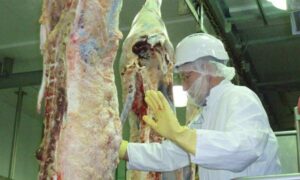
Figure 3: Veterinarian working in slaughter houses
Depending upon the potential market, non carcass material may be utilized as edible byproducts, pet food, animal feed pharmaceuticals, cosmetics and fertilizer. Efficient utilization of byproducts estimated to generate about 11.4% of the gross income from beef, and 7.5% of the income from pork. Waste avoidance and reduction at source, waste recovery, reuse and recycling and waste treatment and disposal are the three important waste management principals. Waste conservation and dry collection of different waste components facilitates better and economic treatment and disposal of waste. Managing solid waste is usually more cost effective than treating and disposing of it as a part of waste water. Collection of gut contents and dung in a relatively dry form can considerably reduce the waste water pollutant loading and waste water treatment costs. Segregation of waste water to recover animal tissues from those of fecal matter and gut contents allows animal tissues recovered for rendering without contamination and down grading of rendering material. Similarly gut content and feces without animal tissues could be composted by simple techniques and free from odors and better utilized. Blood is most commonly collected for inedible processing by allowing it to drain into a collection pit. Blood loss from the carcass is also observed at hide pulling, brisket cutting and head removal which can be collected by dry cleaning. The most popular method to produce blood meal involves coagulating the blood proteins by steam injection, centrifuging the coagulum from the aqueous fraction, and then drying the coagulum. Temperature of 90-95 0C is optimal for coagulation. Ageing of blood improves coagulation. Yield of dried blood is about 12 to 15g per kilogram of dressed carcass weight in ruminants. Dry cleaning methods should be employed to collect meat and fat trimmings and fine debris from carcass saws. Gratings and perforated baskets in floor drains are normally used to prevent large pieces from entering the waste water.
A key element in the design of a wastewater treatment and disposal system is to first give consideration to all reasonable means to reduce wastewater volume. This can usually be achieved through fairly simple and low-cost practices and techniques that are available to most slaughter and poultry processing facilities regardless of size. The cost associated with these practices and techniques may be more than offset by savings in capital and operating costs associated with end of pipe treatment (Muthukumar, 2021).
- Role of Livestock product technology in protection of environment
Innovative packaging with enhanced functions is constantly sought in response to the consumer demands for minimally processed foods with fewer preservatives, increased regulatory requirements, market globalization, concern for food safety, and the threat of food bioterrorism. Active packaging, intelligent packaging, edible coatings/films and biodegradable packaging, and nanotechnology are the major recent innovations in the food packaging industry that have shown promising advanced properties in extending shelf life, improving food safety and quality, and protecting our natural environment. Antimicrobial active packaging is one of the most important concepts in active packaging because meat provides excellent nutrients for the growth of microorganism. Spoilage microorganisms including bacteria, yeast and molds, and pathogenic micrograms, specifically Salmonella spp., S. aureus, L. monocytogenes, C. perfringens, C. botulinum, and E. coli O157:H7 are the major concerns leading to quality deterioration and food safety issues in meat. The aims of using antimicrobial active packaging are to extend shelf-life and to ensure food safety of meat and meat products.
CO2 has inhibitory activity against a range of aerobic bacteria and fungi, as well as direct antimicrobial effect, resulting in an increased lag phase and generation time during the logarithmic phase of microbial growth. For most applications in meat and poultry preservation, high CO2 levels (10–80%) are desirable because these high levels inhibit surface microbial growth; thereby extending shelf-life. The inhibitory action of CO2 has differential effects on different microorganisms. Whereas aerobic bacteria such as Pseudomonas can be inhibited by moderate to high levels of CO2 (10–20%), lactic acid bacteria can be stimulated by CO2. Furthermore, pathogens such as C. perfringens, C. botulinum and L. monocytogenes are minimally affected by CO2 levels lower than 50%. e.g. bicarbonate.
Biodegradable packaging materials are defined as materials derived primarily from renewable sources, such as replenishable agricultural feedstocks, animal sources, marine food processing industry wastes, or microbial sources, and can break down to produce environmentally friendly products such as carbon dioxide, water, and quality compost. Biodegradation is the process by which carbon-containing chemical compounds are decomposed in the presence of enzymes secreted by living organisms, and requires appropriate temperature, humidity and type of microbes for a rapid degradation process. There are currently a range of commercially available biodegradable containers for meat and meat products. Among them, IngeoTM biopolymer by NatureWorks LLC. (Blair, Nebraska, USA) is mostly used to make foam trays. IngeoTM biopolymer uses dextrose (sugar) from corn as the primary feedstock (PLA), but can be made from any abundantly available sugar (Kandeepan et al., 2021).
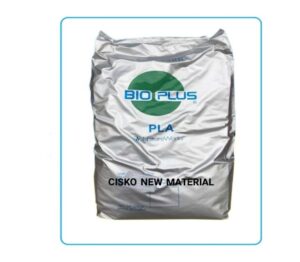
Figure 4: Biodegradable polylactic acid packaging materail
- Role of Livestock production and management in protection of environment
According the Food and Agriculture Organization (FAO) of the United Nations, livestock including dairy contributes about 14.5% of global greenhouse gas emissions (mainly carbon dioxide, nitrous oxide and methane). Greenhouse gas emission intensity is reduced by increased productivity per animal. Strategies for increased productivity include ration balancing in smallholder operations and small grain supplements to ruminants fed high-forage diets. Group feeding dairy cows according to production and feeding diets higher in rumen-undegraded protein can improve milk and protein yield. Livestock production offers the greatest potential to reduce greenhouse gas emission from agriculture- up to 30%. However, poorly managed livestock systems may have adverse effects on the environment and human and animal health and welfare (Naveena et al., 2021).
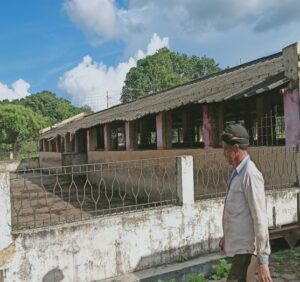
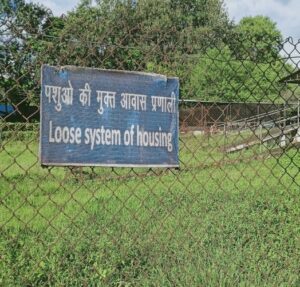

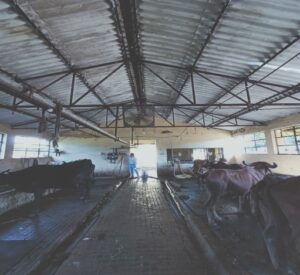
Figure 5: Animal house and nutrition management
Wider adoption of the existing best practices and technologies in feeding, health and husbandry and manure management – as well as greater use of currently underutilized technologies such as biogas generators and energy-saving devices, could help the global livestock sector cut its outputs of global warming gases as much as 30% by becoming more efficient and reducing energy waste (Rawool et al., 2021). Beyond the treatment of animal illnesses or the implementation of preventive measures, such as strengthened biosecurity, programmed de-worming or vaccination, but also addresses housing, nutrition, cleaning, and environmental sanitation is the first priority for a veterinarian.
- Conclusion
Farmers are the backbone of Indian agricultural activities. Livestock are the backbone to the farmers. Theyprovide drought power, milk, meat, wool, hide, skin, manure and eggs to farmers. The livestock is aid andsupporter for the farmer for daily livelihood. Since ancient times, Indian farmers are dependent on thelivestock in many aspects such as cattle and buffaloes for milk purpose, bulls work under the farming andused as draft purpose, sheep and goats rear for the wool, meat, manure purposes and backyard poultry inrural areas rear for the egg and meat production. Now the livestock production gives many importance forthe economy of the farmer as well as large scale farming. In Indian economy, livestock contributes 4.11% GDP per year.
Veterinary science is not only deals with all these but also for safety of environment. Veterinary microbiology, Veterinary public health, Veterinary livestock and management directly and indirectly involve in one health mission and contribute in environmental sanitation.
Reference
Noah, D.L. (2022). Role of Veterinarians in Public Health and One Health. MSD Veterinary Manual online https://www.msdvetmanual.com/public-health/overview-of-public-health/role-of-veterinarians-in-public-health-and-one-health
Naveena, B.M., Muthukumar, M., Banerjee, R. and Sen, A.R. (2021). Climate smart livestock production and processing: An approach for sustainable food security. In: Gurunathan, K., Phand, S., Gadekar, Y.P., Kalpana, S., Devatkal, S., Reddy, B. and Babji, Y. (ed.) Climate smart technologies for food animal production and products. ICAR-National Research Center on Meat, Chengicherla, Boduppal, Telangana, India, pp. 18-23.
Kandeepan, G., Babji, Y., Kalpana, S., Spoorthy, S.A. and Aliya, T. (2021). Smart packaging of meat and meat products: A possible solution for climate change. In: Gurunathan, K., Phand, S., Gadekar, Y.P., Kalpana, S., Devatkal, S., Reddy, B. and Babji, Y. (ed.) Climate smart technologies for food animal production and products. ICAR-National Research Center on Meat, Chengicherla, Boduppal, Telangana, India, pp. 24-37.
Muthukumar, M. (2021). Climate smart technologies for slaughterhouse management. In: Gurunathan, K., Phand, S., Gadekar, Y.P., Kalpana, S., Devatkal, S., Reddy, B. and Babji, Y. (ed.) Climate smart technologies for food animal production and products. ICAR-National Research Center on Meat, Chengicherla, Boduppal, Telangana, India, pp. 38-43.
Rawool, D.B., Barbuddhe, S.B., Malik, S.V.S. and Vergis, J. (2021). Climate change and its impact on livestock with special reference to infectious. In: Gurunathan, K., Phand, S., Gadekar, Y.P., Kalpana, S., Devatkal, S., Reddy, B. and Babji, Y. (ed.) Climate smart technologies for food animal production and products. ICAR-National Research Center on Meat, Chengicherla, Boduppal, Telangana, India, pp. 60-71.
Sejian, V., Devapriya, A., Silpa, M.V., Nair, M.R.R., Devaraj, C., Krishnan, G., Bagath, M., Suganthi, R.U., Awachat, V.B. and Bhatta, R. (2021). Carbon foot print and global warming due to livestock production: myths and facts. In: Gurunathan, K., Phand, S., Gadekar, Y.P., Kalpana, S., Devatkal, S., Reddy, B. and Babji, Y. (ed.) Climate smart technologies for food animal production and products. ICAR-National Research Center on Meat, Chengicherla, Boduppal, Telangana, India, pp. 96-106.

